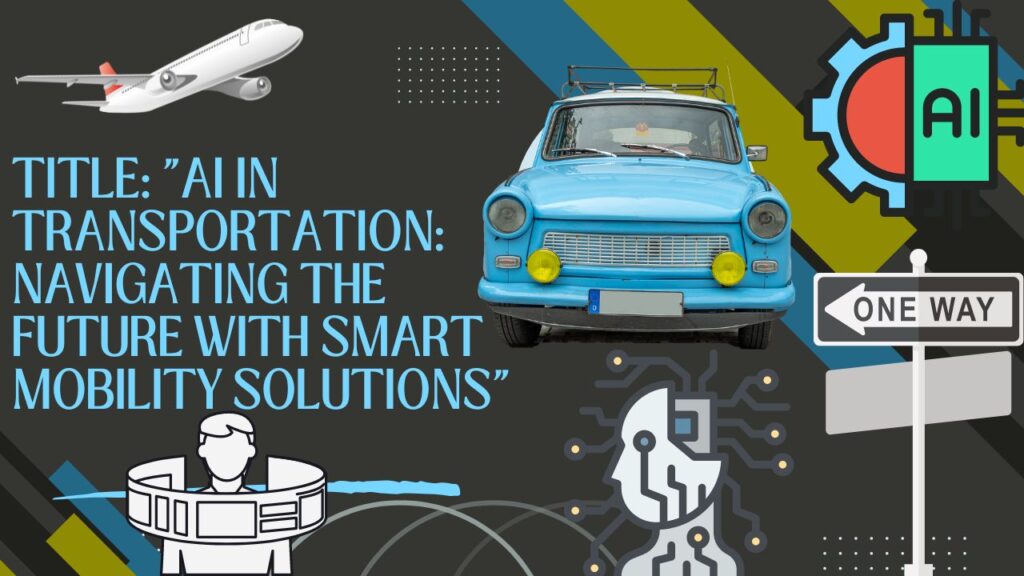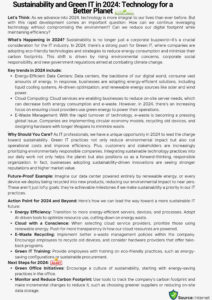
In an era of rapid urbanization and increasing demand for efficient transportation systems, Artificial Intelligence (AI) is emerging as a key enabler of smart mobility solutions. From autonomous vehicles to traffic management systems and ride-sharing platforms, AI-powered technologies are revolutionizing the way we move people and goods. This article explores the diverse applications of AI in transportation, highlighting its potential to improve safety, reduce congestion, and enhance the overall efficiency and sustainability of transportation networks.
Introduction: The Evolution of Transportation
Transportation plays a crucial role in modern society, facilitating economic activity, social interaction, and access to essential services. However, traditional transportation systems face numerous challenges, including traffic congestion, air pollution, and safety concerns. In response to these challenges, there is growing interest in leveraging AI to develop smarter, more efficient transportation solutions. By harnessing the power of AI, we can create intelligent transportation systems that optimize resource allocation, minimize environmental impact, and enhance the overall quality of life for residents.
AI-Powered Autonomous Vehicles
One of the most promising applications of AI in transportation is the development of autonomous vehicles (AVs). AVs use AI algorithms, including computer vision and machine learning, to perceive their environment, make decisions, and navigate safely without human intervention. These vehicles have the potential to revolutionize mobility by reducing accidents, improving traffic flow, and increasing accessibility for individuals with disabilities or limited mobility. Additionally, AVs can offer significant environmental benefits by reducing fuel consumption and emissions through more efficient driving patterns and vehicle sharing models.
AI in Traffic Management and Optimization
AI is also being used to optimize traffic flow and reduce congestion in urban areas. AI-powered traffic management systems analyze real-time data from sensors, cameras, and other sources to monitor traffic conditions, detect incidents, and dynamically adjust signal timing and lane configurations to improve traffic flow. Additionally, AI algorithms can optimize routing and scheduling for public transit systems, ride-sharing services, and freight logistics, reducing travel times and improving the efficiency of transportation networks. By leveraging AI to better manage and coordinate transportation activities, cities can reduce congestion, improve air quality, and enhance the overall reliability of transportation services.
Traffic congestion is a significant challenge for urban areas worldwide, leading to wasted time, increased fuel consumption, and negative impacts on air quality and quality of life. AI-powered traffic management systems offer a promising solution to this problem by providing real-time monitoring and optimization of transportation networks.
AI-Powered Ride-Sharing and Mobility Services
Ride-sharing and mobility-as-a-service (MaaS) platforms are leveraging AI to optimize matching algorithms, route planning, and pricing strategies, making transportation more convenient and affordable for users. AI algorithms analyze demand patterns, user preferences, and real-time traffic conditions to optimize the allocation of vehicles and minimize passenger wait times. Additionally, AI-powered predictive analytics can anticipate demand surges and dynamically adjust pricing to incentivize efficient use of resources. By providing flexible, on-demand transportation options, ride-sharing and MaaS platforms are reducing reliance on private car ownership and promoting more sustainable modes of transportation.
AI in Infrastructure Planning and Management
AI is also being used to optimize the design, construction, and maintenance of transportation infrastructure. AI algorithms can analyze geographic data, traffic patterns, and demographic trends to inform infrastructure planning decisions, such as the location of new roads, bridges, and public transit routes. Additionally, AI-powered predictive maintenance systems can monitor the condition of infrastructure assets, such as bridges and tunnels, and detect potential defects or failures before they occur. By leveraging AI to optimize infrastructure planning and management, cities can enhance the resilience, safety, and sustainability of their transportation networks.
Ethical and Social Considerations
While the potential benefits of AI in transportation are significant, there are also ethical and social considerations that must be addressed to ensure responsible and equitable deployment of AI-powered technologies. Concerns have been raised about the potential for job displacement, particularly among professional drivers, as autonomous vehicles become more widespread. Additionally, there are questions about the privacy and security of personal data collected by AI-powered transportation systems, such as location and travel history. It is essential for policymakers, technologists, and stakeholders to work together to address these concerns and ensure that AI is deployed in a manner that promotes social equity, accessibility, and transparency.
Future Directions and Conclusion
Looking ahead, the future of AI in transportation holds immense promise, with continued advancements in AI-driven technologies expected to further revolutionize mobility and reshape the urban landscape. As AI becomes more integrated into transportation systems, we can expect to see improvements in safety, efficiency, and sustainability, as well as new opportunities for innovation and economic growth. By harnessing the power of AI to develop smarter, more efficient transportation solutions, we can create cities that are safer, more accessible, and more environmentally sustainable, ensuring a brighter future for generations to come.






